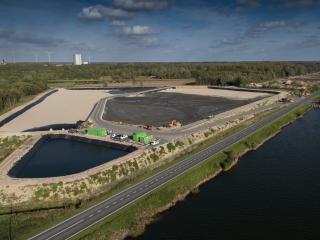Borealis Polymer NV, based in Kallo, Belgium, is a petrochemical company specialised in the production of polypropylene starting from propene. The Dehydrogenation (or Dehy) unit produces propene using propane. The existing Dehy Polycyclic Aromatic Hydrocarbons’ (PAH) wastewater treatment plant needed to be extended in order to meet the environmental norm concerning PAH concentration at the discharge point.
What we do

Challenge

Solution
DEME was responsible for the design, engineering, construction and commissioning of this complex project. Importantly, we were able to develop a compact design that could be incorporated into the limited space of the existing production facility.
We developed a solution whereby the new wastewater pretreatment plant operates continuously, 7 days a week, 24 hours a day, and treats wastewater coming from two sources:
- Wastewater from the Dehy plant, after pretreatment in a sour water stripper
- Backwash water from the sand and coal filters
Used technology
Wastewater from the Dehy plant is first treated in a sour water stripper to remove volatile hydrocarbons by means of low-pressure steam injection. Effluent from this water stripper is pumped to the new, wastewater pretreatment process. Sand filters and active carbon filters are backwashed on a regular basis. The backwash waters are collected in a decantation pit and from there, pumped to the wastewater treatment plant.
On-site pilot tests have been conducted in the past to find the optimal solution for pretreating the wastewater from the Dehy unit. It was concluded that an optimised chemical dosing, combined with a gravity settler, was the best way of removing PAH from the wastewater. The backwash from the sand and active carbon filters is collected in an existing decantation pit to allow the heaviest particles to settle. This stream is then, together with the wastewater from the Dehy plant, further treated in a physico-chemical treatment plant. This consists of a buffer, a coagulation/neutralisation/flocculation tank, followed by a settling tank.
The purpose of the buffer drum is to level out peak flows and to equalise fluctuating influent concentrations. A coagulant is dosed into the coagulation tank, which is equipped with a fast-rotating mixer. In a neutralisation tank, a pH correction is performed to enable the optimal conditions for the flocculation step. Flocculation occurs with liquid polymer in a tank with a slow-rotating mixer. The chemically pretreated water flows by gravity to a gravity separator/sludge thickener in order to separate the settled flocks from the supernatant water. Finally, this supernatant is sent to the existing wastewater treatment plant for further treatment.


